#floodprevention
Explore tagged Tumblr posts
Text
High-Tech Machines keep storm drains clean and floods😲😆
#desiviralrecap#Innovation#TechTrends#Engineering#FloodPrevention#SmartTech#FutureReady#UrbanPlanning#GreenInfrastructure#TechSolutions#Sustainability#SmartCities#WaterManagement#PublicSafety#StormwaterSolutions#DrainageSystems#CleanWaterTech#EcoTech#ClimateAction#Resilience#FloodControl#InfrastructureWeek#SmartMachines#TechForGood#DisasterPreparedness#CommunityResilience#EnvironmentFriendly#TechInAction#WeatherTech
1 note
·
View note
Text
Preventing Flood and Improving Proper Segregation

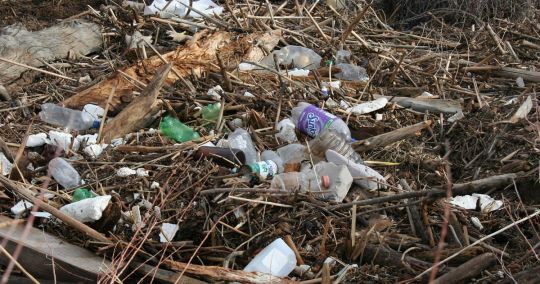

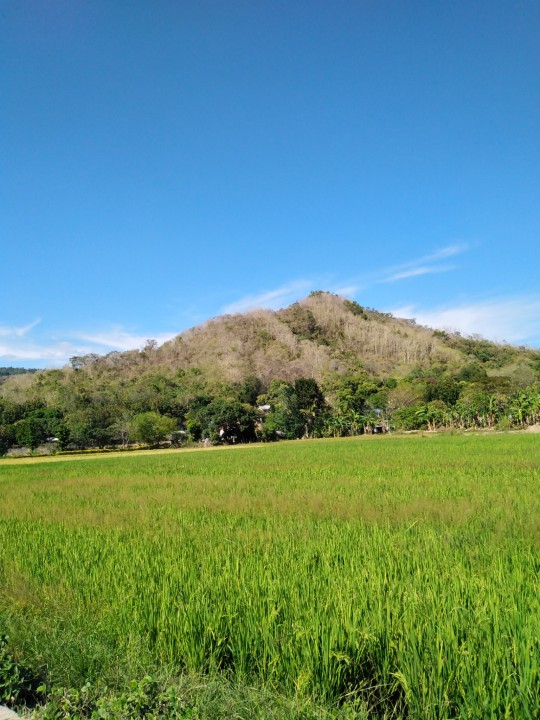
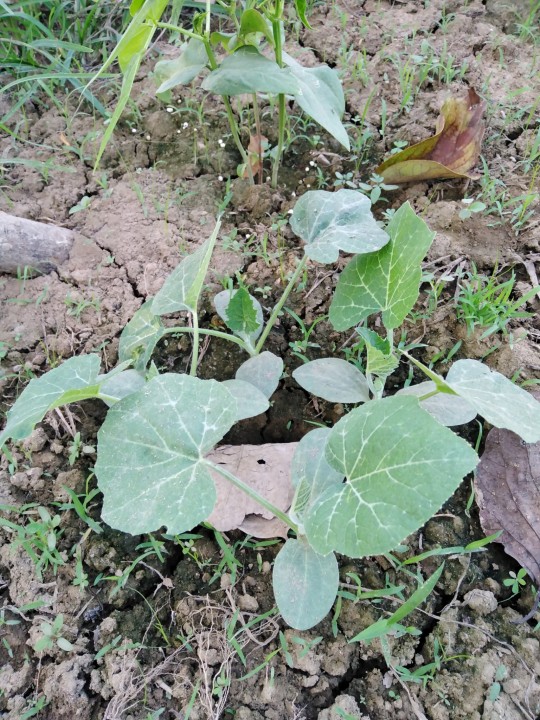
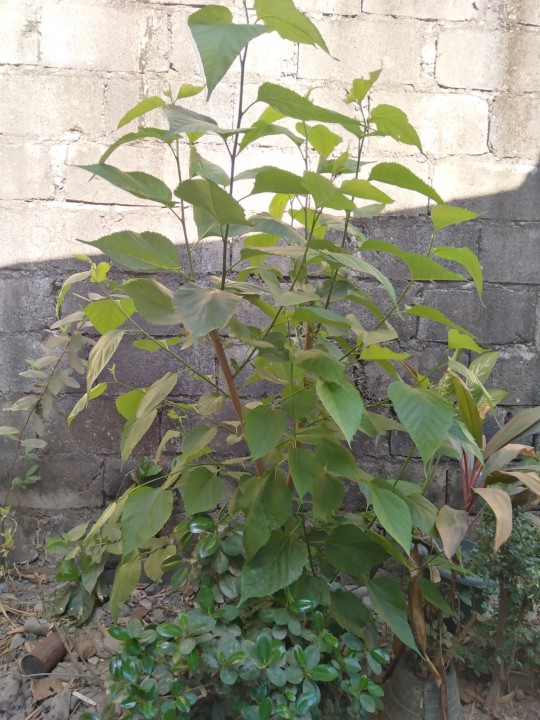
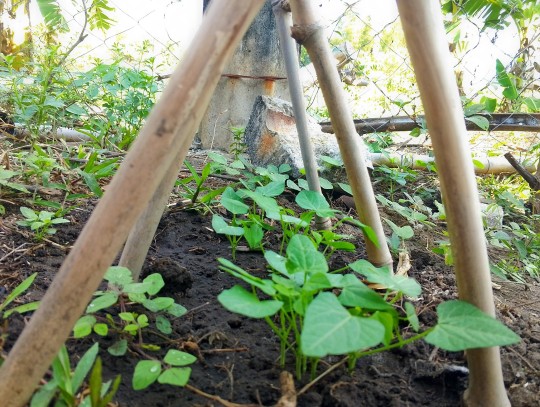
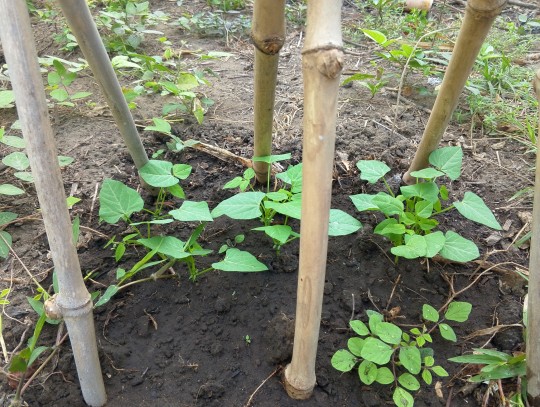
Improper waste segregation is the habitual dilemma even in our own locality. This kind of situation was the main problem even in a small town because of clogging of drainage and pond of trash because of the immorality of individuals regarding throwing the trash.
We just notice that some individuals didn't know how to segregate the trash and doesn't have the biodegradable, non biodegradable and recyclable bin in their community.
Planting is important in our life for numerous reasons. Here are some key benefits:
1. Environmental Impact: Plants play a crucial role in maintaining a healthy environment. They absorb carbon dioxide and release oxygen through photosynthesis, helping to reduce air pollution and combat climate change. Trees, in particular, are effective in absorbing harmful greenhouse gases and providing shade, which helps to cool the surrounding areas.
2. Biodiversity Conservation: Planting trees and other vegetation helps to preserve and restore natural habitats, supporting a diverse range of plant and animal species. This is important for maintaining ecological balance and preserving biodiversity.
3. Improved Air Quality: Plants act as natural air filters, removing pollutants and toxins from the air. They absorb harmful gases and particulate matter, thereby improving the quality of the air we breathe. This is especially beneficial in urban areas with high levels of pollution.
4. Soil Conservation: Planting trees and plants helps to prevent soil erosion. Their roots hold the soil together, reducing the risk of erosion caused by wind and water. This is crucial for maintaining fertile soil for agriculture and preventing land degradation.
5. Aesthetics and Mental Well-being: Plants enhance the beauty of our surroundings, whether it's a garden, park, or indoor space. Being in the presence of plants has been shown to have a positive impact on our mental well-being, reducing stress and improving mood.
7. Educational and Recreational Value: Planting and gardening provide opportunities for education and recreation. It allows us to learn about plant life cycles, ecosystems, and the importance of environmental stewardship. It also offers a rewarding and enjoyable hobby that can be shared with family and friends.
Plants contribute to reducing air pollution through a process called photosynthesis. During photosynthesis, plants absorb carbon dioxide from the air and release oxygen. This natural process helps to remove carbon dioxide, a greenhouse gas, from the atmosphere, which plays a significant role in mitigating climate change.
In addition to carbon dioxide absorption, plants also have the ability to filter and remove other pollutants from the air. The leaves of plants have small openings called stomata, which allow them to take in carbon dioxide for photosynthesis. These stomata can also absorb other gases and particles present in the air, such as nitrogen dioxide, ozone, sulfur dioxide, and particulate matter.
Trees, in particular, are effective in reducing air pollution. Their large canopies and extensive root systems make them excellent air filters. Trees can trap and absorb pollutants, including dust, smoke, and various gases, helping to improve air quality in urban areas. They also provide shade, which can lower temperatures and reduce the formation of ground-level ozone, a harmful air pollutant.
Urban green spaces, such as parks and gardens, with a variety of plants and trees, can act as "green lungs" for cities. They help to create a healthier and more pleasant environment by reducing the levels of air pollutants and providing oxygen-rich air for people to breathe.
Cutting trees and dead trees is also a dilemma to the cities like metro manila, trees are convenient and a life saver to the people since it was a good shelter when the sun was still and trees absorb water from the rain or even the stock water in the surroundings.
If we will throw our garbage properly and in the right segregation we can avoid the wrong habitual and we can see the smoothness of flowing water in the river and drainage in addition to that if we stop cutting trees it can absorb a water and it has many benefits to the individual in the communities and maybe some dead tree can survived due to the water absorbing .
It's important to note that while plants contribute to reducing air pollution, they alone cannot solve the problem entirely. It requires a collective effort to reduce emissions from various sources and adopt sustainable practices. However, planting and preserving vegetation play a crucial role in improving air quality and creating a more sustainable and livable environment.
2 notes
·
View notes
Text

Commercial Water Damage Prevention Near Boston | Plumbing Facility Maintenance
Protect your property before damage strikes! We specialize in commercial water damage prevention near Boston, offering expert inspections, leak detection, pipe insulation, sump pump maintenance, and drainage system upgrades. Ideal for offices, retail spaces, and multi-unit buildings. Avoid costly repairs and downtime with proactive solutions tailored to New England weather.
1. Licensed & insured technicians
2. Fast scheduling & emergency support
Call now for a free consultation!
Kindly message me for an in-depth conversation.
Email: [email protected]
Website: https://plumbingfacilitymaintenance.com/
Office Location: 60 Grandview Court, Cheshire, CT 06410
Stay in touch with the latest developments and company news:
LinkedIn
Facebook
Youtube
Instagram
Trusted by professionals. Built to last. Serving Boston and beyond.
#CommercialWaterDamage#WaterDamagePrevention#BostonCommercialServices#PropertyProtection#LeakDetection#PipeInsulation#SumpPumpMaintenance#FloodPrevention#FacilityMaintenance#BuildingProtection#EmergencyPlumbing#BostonPropertyCare#WaterSafetySolutions#CommercialPlumbing#NewEnglandBuildings
1 note
·
View note
Text
How Climate Conditions Affect Land Clearing in Fort Worth, TX

Texas weather isn’t just a backdrop—it’s a game-changer. Discover how Fort Worth’s heatwaves, rainstorms, and seasonal swings impact land clearing timelines, safety, and strategy. A must-read for smart planning and smoother projects! Read now-https://fortworthlandclearing.com/2025/06/12/how-climate-conditions-affect-land-clearing-in-fort-worth-tx/
#LandClearing#FortWorthTX#LandClearingServices#TexasWeather#ConstructionPrep#SiteClearing#HeavyMachinery#ClimateImpact#LandDevelopment#BrushClearing#SoilErosion#DroughtSafety#FloodPrevention#ExcavationWork#ClearingTips#EnvironmentalCompliance#ContractorTips#StormSeason#TexasProjects#SafeClearing
0 notes
Text
youtube
AI Predicting Natural Disasters: How Technology is Saving Lives!
What if we could know about an earthquake, flood, or wildfire before it even happens? This video dives into amazing new ways AI is predicting natural disasters and how this artificial intelligence technology is saving lives around the world.
From Japan getting early earthquake warnings to Canada fighting wildfire alerts with AI, and NASA using powerful AI systems with satellites – we're getting days, not just hours, of warning! Learn how AI watches seismic patterns, weather fronts, and real-time sensor data to give us critical information and rescue people.
But how accurate are these predictions? And what big challenges are still out there to make this a worldwide solution? Join us to see how AI predicting natural disasters is changing how we prepare for nature's powerful forces. We'll show you real-life examples and look at exciting future tech like quantum computing and AI-on-orbit satellites. You'll discover why AI disaster prediction might be our best friend in the fight for survival.
This isn't science fiction anymore – it's happening now! See how AI is revolutionizing disaster preparedness and making us safer. Don't miss this eye-opening look at the future of saving lives with technology.
What do you think? Could AI be our strongest ally against the next big disaster?
#AIPrediction#NaturalDisasters#SavingLives#Technology#ArtificialIntelligence#DisasterPreparedness#EarthquakeWarning#FloodPrevention#WildfireAlerts#FutureTech#Innovation#AIForGood#ScienceAndTechnology#EmergencyResponse#GlobalImpact#Youtube
1 note
·
View note
Text
Backwater Valve Installation Burlington
Are you looking for Backwater Valve Installation Service in Burlington. Waterproofing4Less provides professional backwater valve installation in Burlington to protect your home from sewage backups and basement flooding. Our team of experts guarantees that every installation satisfies city regulations and is finished quickly and reasonably. Safeguard your property with a reliable flood prevention solution from the local experts you can trust. Contact No.: +1 (416) 333-2212 Get more details: https://www.waterproofing4less.ca/backwater-valve-in-burlington
0 notes
Text
Does Homeowners Insurance Cover Water Restoration?
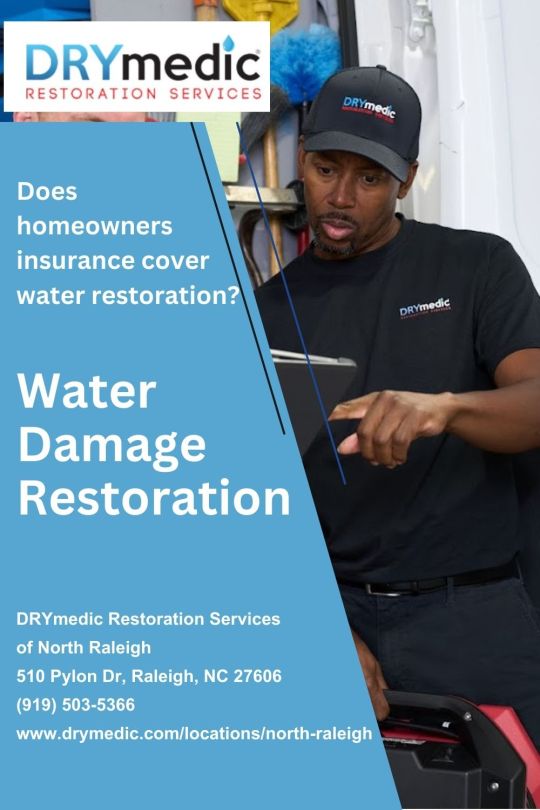
Water damage can strike fast—and filing an insurance claim can be confusing. At DRYmedic Restoration Services of North Raleigh, we hear this question all the time:
“Is water damage restoration covered by my homeowners insurance?” 👉 Short answer: Often yes… but not always.
🛠 Why You Should Call a Restoration Company First
Most people call insurance first—but we recommend calling us first. Here’s why:
We assess if the damage is claim-worthy
We stop the spread of water damage immediately
We document everything for your insurance
We offer affordable self-pay solutions if it’s not covered
💡 Got Questions? We’ve Got Answers:
🛑 Covered damage? We’ll bill your insurer directly. ⚠️ Not covered? We offer out-of-pocket discounts. 📋 Need a quick assessment? We’re here 24/7.
📍 Serving Raleigh, Durham, Chapel Hill & the Triangle 📞 Call DRYmedic of North Raleigh today at (919) 503-5366 for expert water restoration + insurance help.
🔗 Read the Full Guide Here 📍 Visit our Google Business Profile
#homeinsurance#waterdamage#moldremoval#drymedic#raleighnc#restorationhelp#homeownershiptips#insuranceclaims#floodprevention#nchomes
0 notes
Text
Top Erosion Control Services in Tilton, NH for Effective Land Protection
Erosion is an ongoing natural process, but when exacerbated by environmental factors or human activity, it can lead to significant damage to your property and landscape. Erosion can cause soil loss, flooding, and instability, making it crucial to implement erosion control measures. In Tilton, NH, where changing weather patterns and geographical conditions can contribute to the acceleration of erosion, Erosion Control Services in Tilton, NH are essential for maintaining a stable and protected environment. This article delves into the significance of erosion control, the best methods for addressing it, and the advantages of professional erosion control services.
What is Erosion and How Does It Affect Your Property?
Erosion refers to the process by which wind, water, or ice gradually wears away the surface of the earth, carrying away soil, rock, and other materials. While it is a natural occurrence, human activities such as construction, deforestation, and poor land management practices can greatly accelerate the process. This can lead to several issues on your property:
Soil erosion: Loss of topsoil that affects plant life and agricultural productivity.
Flooding and poor drainage: Erosion often causes changes in water flow, leading to increased flooding and drainage problems.
Damage to property and infrastructure: Erosion can destabilize foundations, roads, and other structures, requiring costly repairs.
Deterioration of water quality: Sediment carried by runoff can pollute nearby water bodies, affecting aquatic life and water supplies.
Erosion Control Services in Tilton, NH are vital to mitigating these impacts and ensuring the long-term stability of the land.
Why is Erosion Control Important?
Implementing erosion control measures is crucial to preserving the integrity of the land and preventing long-term damage. Here are some of the key reasons why erosion control should be a priority:
1. Preserves Soil Fertility
Soil is the foundation for plant life, and erosion can strip away the nutrient-rich topsoil that is essential for crops, lawns, and gardens. Erosion control ensures that the soil remains intact, allowing vegetation to thrive and maintaining agricultural productivity.
2. Reduces Flooding Risks
Erosion can disrupt natural water flow and drainage systems, leading to increased risks of flooding. Erosion control measures, such as proper drainage systems and vegetation, help direct water flow and reduce flooding risks on your property.
3. Protects Infrastructure
Without adequate erosion control, the soil around your foundations, roads, and other infrastructure can weaken and erode, potentially causing structural damage. By taking preventive action, you can protect your investments and avoid costly repairs.
4. Enhances Aesthetic Appeal
Erosion can damage the natural beauty of your landscape. By preventing soil loss and stabilizing slopes, erosion control helps maintain a lush, healthy environment, enhancing the visual appeal of your property.
5. Contributes to Environmental Health
Soil erosion often leads to sediment runoff into nearby water sources, impacting water quality and the health of aquatic ecosystems. Erosion control reduces sedimentation and protects water bodies from pollution.
Effective Erosion Control Methods
There are several proven techniques used by professionals to prevent and manage erosion. Below are some of the most common erosion control methods used by Erosion Control Services in Tilton, NH:
1. Silt Fences
Silt fences are commonly used in construction zones or other areas where soil disturbance occurs. Made from fabric or mesh, these fences trap sediment and prevent it from moving into nearby water bodies or areas where it could cause further erosion.
2. Erosion Control Blankets
These biodegradable mats are placed over exposed soil to provide temporary protection from wind and water erosion. Over time, the mats degrade naturally, allowing vegetation to grow and stabilize the soil.
3. Vegetative Cover
Planting grass, shrubs, or trees is one of the most effective ways to control erosion. The roots of plants help hold the soil together, preventing it from washing away. Vegetative cover is particularly useful on slopes, where soil erosion is most likely to occur.
4. Retaining Walls
Retaining walls are structures built to prevent soil movement on sloped areas. These walls hold back soil, stabilizing the landscape and preventing erosion in vulnerable locations such as hillsides or along riverbanks.
5. Riprap
Riprap involves placing large rocks or stones along shorelines or slopes to absorb the impact of moving water. This method is highly effective in areas prone to heavy rainfall or flooding, as it helps prevent the erosion caused by water flow.
6. Drainage Systems
Proper drainage is key to managing erosion, especially in areas with high water runoff. Solutions such as French drains, swales, or stormwater management ponds redirect water flow, ensuring it doesn’t contribute to erosion.
The Benefits of Hiring Erosion Control Professionals
While some erosion control methods can be handled by property owners, there are several advantages to hiring professional Erosion Control Services in Tilton, NH. Here’s why working with experts is a smart investment:
1. Expert Knowledge and Custom Solutions
Erosion control professionals have extensive knowledge of the local environment and can develop customized solutions based on your property’s specific needs. Whether you’re dealing with a steep slope or low-lying area, experts will recommend the most effective methods.
2. Long-Term Effectiveness
Professional services not only offer immediate solutions but also ensure that the measures put in place are sustainable. Erosion control experts use high-quality materials and techniques that provide long-term protection against erosion.
3. Compliance with Local Regulations
In many cases, local regulations may require the implementation of erosion control measures, especially during construction projects. Professionals ensure that your property is compliant with all local codes and environmental guidelines.
4. Cost-Effective Solutions
Though DIY methods may seem more affordable, they often fail to provide lasting results. Inadequate erosion control can lead to further damage, requiring more costly repairs in the future. Professional services help you avoid these costs by providing durable solutions.
Conclusion
Erosion can cause a wide range of problems, from soil loss and flooding to damage to infrastructure and water pollution. Erosion Control Services in Tilton, NH are essential for preventing these issues and ensuring the long-term stability of your property. Whether through the installation of silt fences, vegetative cover, or drainage systems, professional erosion control services offer the expertise and solutions needed to protect your land from the damaging effects of erosion. By taking action now, you can safeguard your property and contribute to a healthier environment for years to come.
#ErosionPrevention#TiltonNH#LandProtection#ErosionControl#SustainableLandUse#FloodPrevention#SoilConservation
0 notes
Text
Affordable Sump Pump Installation & Repair Services
Worried about basement flooding or water damage? Trust HenSam Plumbing Services - San Jose for expert sump pump services in San Jose, CA, and nearby areas including Campbell, Saratoga, Cupertino, Los Gatos, Sunnyvale, Morgan Hill, Santa Clara, Mountain View, Milpitas, Monte Sereno, Cambrian, Blossom Valley, and West San Jose.
We offer affordable and professional sump pump installation, sump pump repair, and sump pump replacement to keep your home protected. If your system isn’t working, our team provides emergency sump pump services 24/7. We also provide routine sump pump maintenance to ensure long-term reliability.
Don’t wait until it’s too late! Contact HenSam today for trusted and fast sump pump services near you.
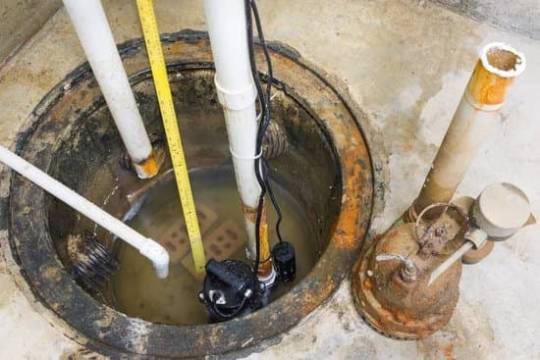
#SumpPumpServices#SumpPumpRepair#SumpPumpInstallation#SanJosePlumber#HenSamPlumbing#EmergencySumpPump#FloodPrevention#BasementWaterproofing
0 notes
Text
Protecting Pasadena, Texas: How BJ’s SandBags Helps Keep Your Property Safe
Protecting Pasadena, Texas: How BJ’s SandBags Helps Keep Your Property Safe
Flooding and hurricanes are a reality for residents and businesses in Pasadena, Texas, and surrounding areas. As storms become more unpredictable, having a reliable flood protection plan is crucial. That’s where BJ’s SandBags comes in. Whether it’s an approaching hurricane or unexpected heavy rainfall, our sandbags provide quick, effective, and affordable flood control solutions to safeguard your home, business, or community.
The Importance of Flood Protection in Texas
Pasadena, Texas, sits in a high-risk flood zone, meaning many homes and businesses are vulnerable to rising waters during storms. Flood damage can lead to thousands of dollars in repairs, lost property, and business interruptions.
That’s why preparing ahead of time with BJ’s SandBags is essential. Sandbags are a simple yet effective way to:
✅ Block floodwaters from entering buildings ✅ Reinforce levees and low-lying areas ✅ Prevent soil erosion during heavy rains ✅ Divert water away from essential structures
How BJ’s SandBags Supports the Community
When Hurricane Harvey devastated Texas, BJ’s SandBags worked tirelessly to provide emergency sandbags to families, businesses, and city officials. With our quick turnaround and large inventory, we helped communities minimize damage and protect their most valuable assets.
One Pasadena business owner shared their experience:
“Our warehouse is in a flood-prone area, and BJ’s SandBags delivered exactly what we needed. Thanks to their fast response, we were able to create barriers that saved our inventory.”
Why Choose BJ’s SandBags?
Our commitment to quality and reliability makes us the go-to provider for flood protection in Texas. Here’s what sets us apart:
✔ High-Quality Sandbags – Durable and built to withstand extreme weather. ✔ Bulk & Emergency Orders – Available when you need them most. ✔ Fast Delivery in Pasadena – We get sandbags to you quickly to prepare for any storm. ✔ Expert Guidance – Need advice on the best way to stack sandbags? We’re here to help!
Be Storm-Ready: Order Your Sandbags Today!
Don’t wait for the next big storm to hit—protect your property today. Whether you need a few dozen or thousands of sandbags, BJ’s SandBags has you covered.
📍 BJ’s SandBags – Pasadena, Texas 📞 (713) 352-0472 🌐 sandbagstexas.com
Prepare today, protect tomorrow. Trust BJ’s SandBags for all your flood and hurricane protection needs!
#FloodPreparedness#BJSSandBags#PasadenaTexas#HurricaneProtection#StormSafety#DisasterPreparedness#FloodPrevention#EmergencyResponse
0 notes
Text
#WaterStagnation#DelhiMonsoon#RekhaGupta#MonsoonPreparedness#DelhiWaterManagement#FloodPrevention#MonsoonSafety#WaterConservation#DelhiNews#durantabarta
0 notes
Text
Is Your Plumbing at Risk? Common Causes of Unexpected Leaks & Flooding
The plumbing-related emergencies are very sudden and often catch you off-guard and can cause immense damage to your property and your home. From a leaking tap in your kitchen to floods- these are emergencies that cost you a lot of money and even more of your peace. If you face a plumbing emergency, you need some Orange County Emergency Plumbing services to fix the problem quickly and effectively. But what brings about leaks and floods all of a sudden? Let's look through the most common causes and how to avert them.

1. Aging Pipes and Corrosion
Over years, the pipes undergo corrosion leading to their disintegration. Older homes in Orange County may have outdated plumbing systems made of galvanized steel, which cannot withstand rusting. Corroded pipes weaken within a frame of time and develop leaks awaiting immediate repairs by an Emergency Plumber in Orange County.
How to Prevent It:
Get plumbing inspections done regularly.
Old pipes must be removed and replaced with new ones, made of corrosion-resistant pipes like PEX or copper.
2. Too Much Water Pressure
Sure, the high-pressure water exposure feels great in the shower, but boost this too high, and your pipes would eventually be stressed by it. This might lead to leakages and even burst pipes, resulting in the extensive costs of water damage.
Symptoms of High Water Pressure:
Knocking sounds in pipes
Unexpected pipe leakages
Constant dripping faucets
Prevention:
Install a water pressure regulator.
Make sure the water pressure of your house is maintained at 40-60 psi.
3. Interstitially Between Sewer Backup and Drain Clog
Drain lines and sewer backups are prone to causing water overflow and even flooding. The common causes of blockage include grease, food waste, hair, and non-flushables.
What to Do to Prevent It:
Do not flush anything except toilet paper.
Install drain guards to trap debris.
Organize professional drain cleaning services.
4. Tree Root Intrusion
Tree roots will find water sources naturally, and they will penetrate pipes underground, leading to leaks and clogs. Once roots enter a pipe, they keep growing, aggravating the damage with time.
Prevention:
Do not plant trees close to sewer lines.
Book regular plumbing checks with camera technology.
Call an Orange County Emergency Plumber if you suspect root invasion.
5. Worn-Out or Defective Plumbing Fixtures
Leaky faucets, old water heaters, and broken toilets are all common causes of water waste and leaks. Seals, washers, and connections wear out over time and let water escape.
How to Prevent It:
Check fixtures periodically.
Replace worn-out parts before they completely fail.
6. Insufficient Installation and DIY Errors:
Improper or bad installation of pipe fittings leads to leaking and water damage during that bad time. Most homeowners attempt to do plumbing repairs themselves rather than call the plumber and end up making the situation worse.
How to Avert It:
Hire a licensed expert for plumbing installation.
Do not use temporary repairs that do not fix the real problem.
7. Sudden Temperature Fluctuations
Orange County does not have harsh winters, but sudden temperature changes can still affect plumbing. Expansion and contraction of pipes may result in cracks, and this can cause leaks.
How to Prevent It:
Insulate exposed pipes.
Keep an eye on your plumbing during seasonal transitions.
8. Slab Leaks
Leaking of the pipes that flow underneath the foundation of your house in what is known as slab leakage. This is one of the primary causes of structural injury to your house, mold infestations, and damages that require you to resort to expensive repairs.
Signs of a Slab Leak:
Unexpected rise in water bills
Water spots on floors
Sound of running water when no fixtures are being used
Prevention:
Have a plumber perform regular leak detection tests.
Call an Orange County Emergency Plumber right away if you suspect a slab leak.
9. Shattered or Moving Pipes
Earthquakes and ground movements may shatter or dislodge pipes. Small movements in soil composition may affect underground pipes, causing leaks and water damage.
How to Prevent It:
Strengthen underground pipes.
Have professional pipe inspections following seismic activity.
10. Leaks in Water Heater
Water heaters may leak as a result of internal corrosion, pressure, or leaking valves. Water heater leaks can lead to flooding in your house if not promptly fixed.
Prevention:
Drain your water heater yearly to clear sediment deposits.
Replace aging water heaters before they leak.
Conclusion
Leaks and flooding in plumbing can be catastrophic, but these could be prevented with timely maintenance and early detection. Whatever is the issue - corroded pipes, excessive water pressure, or slab leaks, being proactive saves you from huge repair bills. If you sense any plumbing malfunction, don't wait to give a call to an Orange County Emergency Plumber for instant action. Their help can prevent what could be an impending disaster caused by minor flaws, keeping your home safe and dry.
View Source:
#OrangeCountyPlumber#EmergencyPlumber#PlumbingLeaks#LeakDetection#FloodPrevention#PipeRepair#DrainCleaning#SlabLeakRepair#PlumbingEmergency#WaterDamage#PlumbingInspection#SewerRepair#HomeMaintenance#PlumbingTips#WaterHeaterRepair#ContactNow
0 notes
Text
Reliable Sump and Effluent Pump Services in Vienna, VA
Looking for expert sump and effluent pump services in Vienna, VA? ABC Plumbing offers professional installation, repair, and maintenance to keep your home safe from water damage. Our skilled technicians ensure your system operates efficiently, preventing basement flooding and managing wastewater effectively.
✅ Expert Installation & Repair ✅ Emergency Services Available ✅ Affordable & Reliable Solutions
Protect your home with our trusted plumbing services! Visit our page to learn more. 🚰💧
#SumpPump#EffluentPump#PlumbingServices#ViennaVA#FloodPrevention#abco#cleaning#emergency#plumbing#home
0 notes
Text
Their expertise in flood risk assessments, regulatory compliance, and effective mitigation strategies ensures that developments are not only viable but also sustainable
0 notes
Text
A guide to understanding the causes of flooding, action to take, and preventative measures.
#flooding#floodprevention#floods#flood control#rainfall#heavy rain#garden#home & lifestyle#home and garden#outdoorliving#outdoor space#plants#gardening#drainage#flooded#waterlogged
0 notes
Text
Environmental Assessments for Planning and Development

Ensure your development project meets all environmental standards with expert assessments. Odour assessment for planning is essential for evaluating and mitigating potential odour issues, ensuring that your project complies with environmental regulations. Odour assessment helps address concerns related to air quality and potential disturbances in residential or commercial areas.
For air quality concerns, air quality assessment services and air quality survey provide detailed reports on pollution levels and impact, with air quality assessment consultants offering expert recommendations to improve environmental conditions.
When considering light exposure, daylight assessment services and sunlight survey help measure the potential impact of your development on surrounding areas. Daylight and sunlight planning support ensures that your project complies with local regulations regarding light access, benefiting both the environment and the well-being of occupants. These assessments are vital for smooth, compliant planning approvals.
#DrainageConsultantForPlanning#DrainageStrategyPlanning#FloodRiskConsultant#TrafficAssessmentConsultancy#TrafficPlanningConsultant#TransportConsultancyLondon#PlanningConsultants#DrainageSolutions#FloodRiskAssessment#SustainablePlanning#TrafficManagement#UrbanPlanning#TransportPlanning#EnvironmentalConsultants#PlanningApproval#DevelopmentConsultants#TrafficImpactAssessment#DrainagePlanning#FloodPrevention#TransportConsultancy#PlanningServices#LondonTransportConsultants#DevelopmentSupport#FloodRiskManagement#TrafficFlowAnalysis#RegulatoryCompliance
0 notes